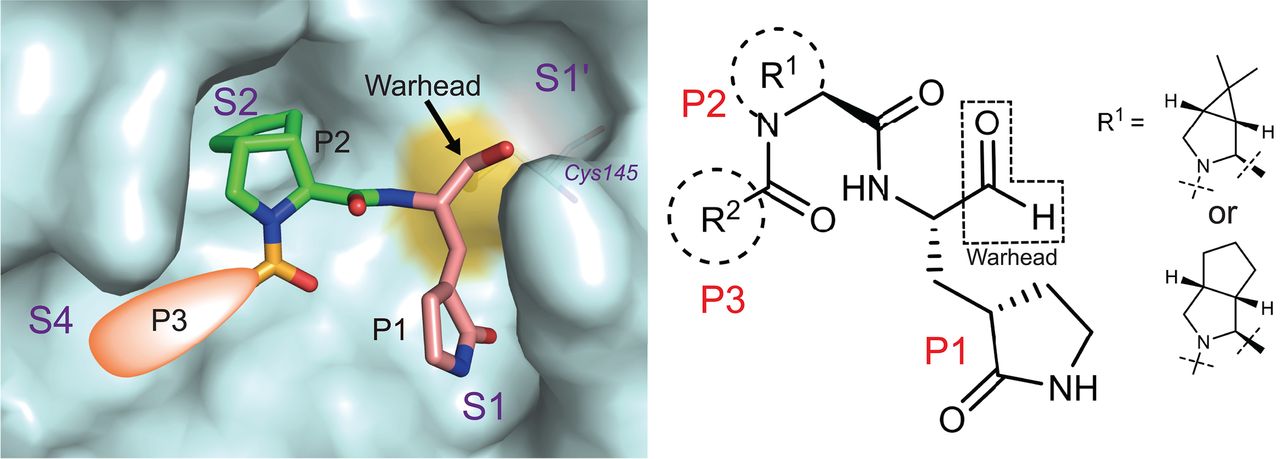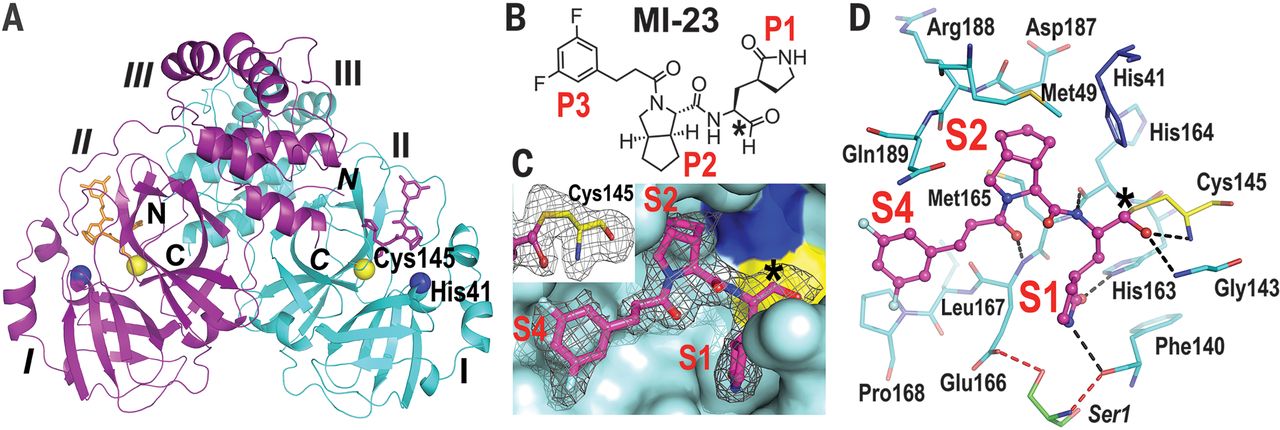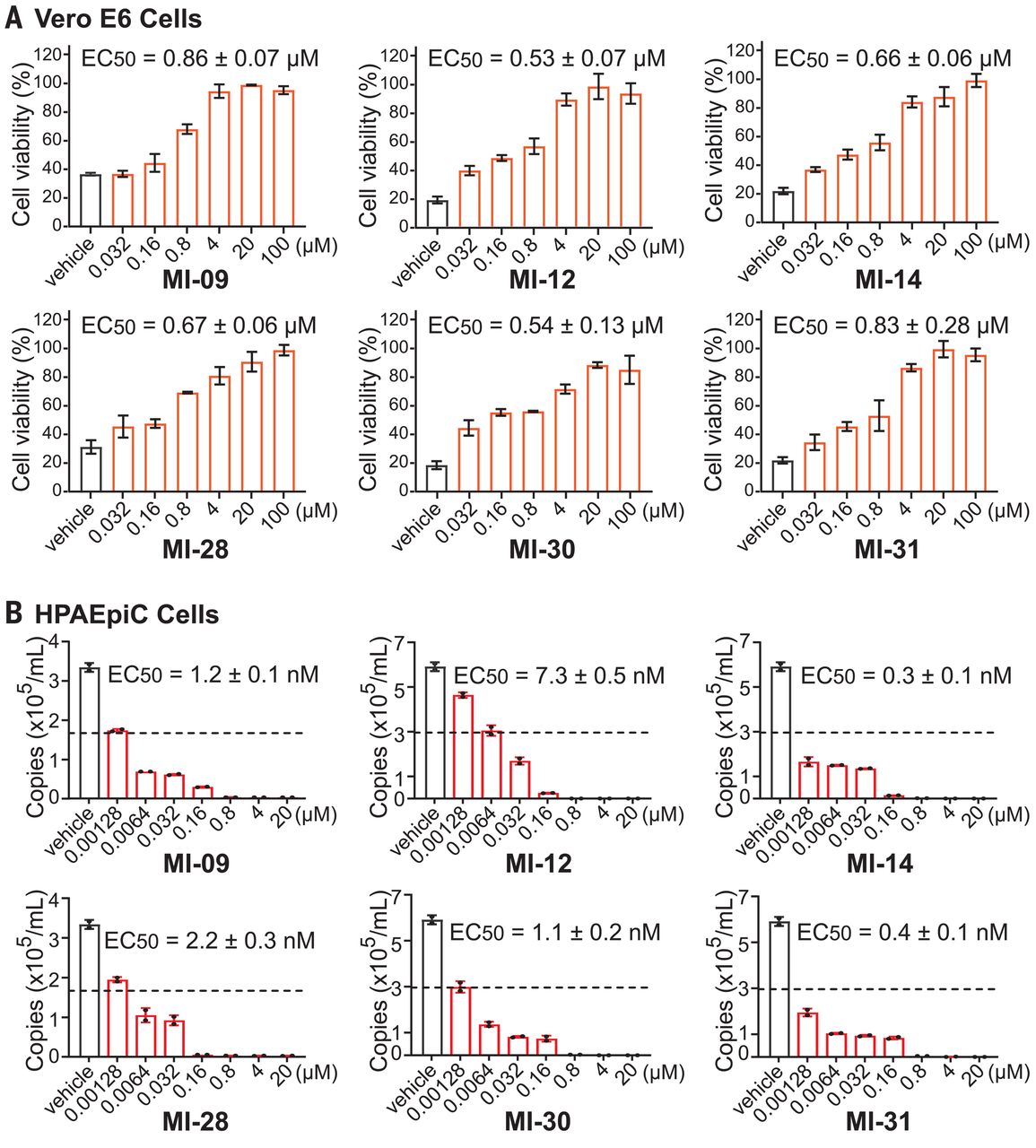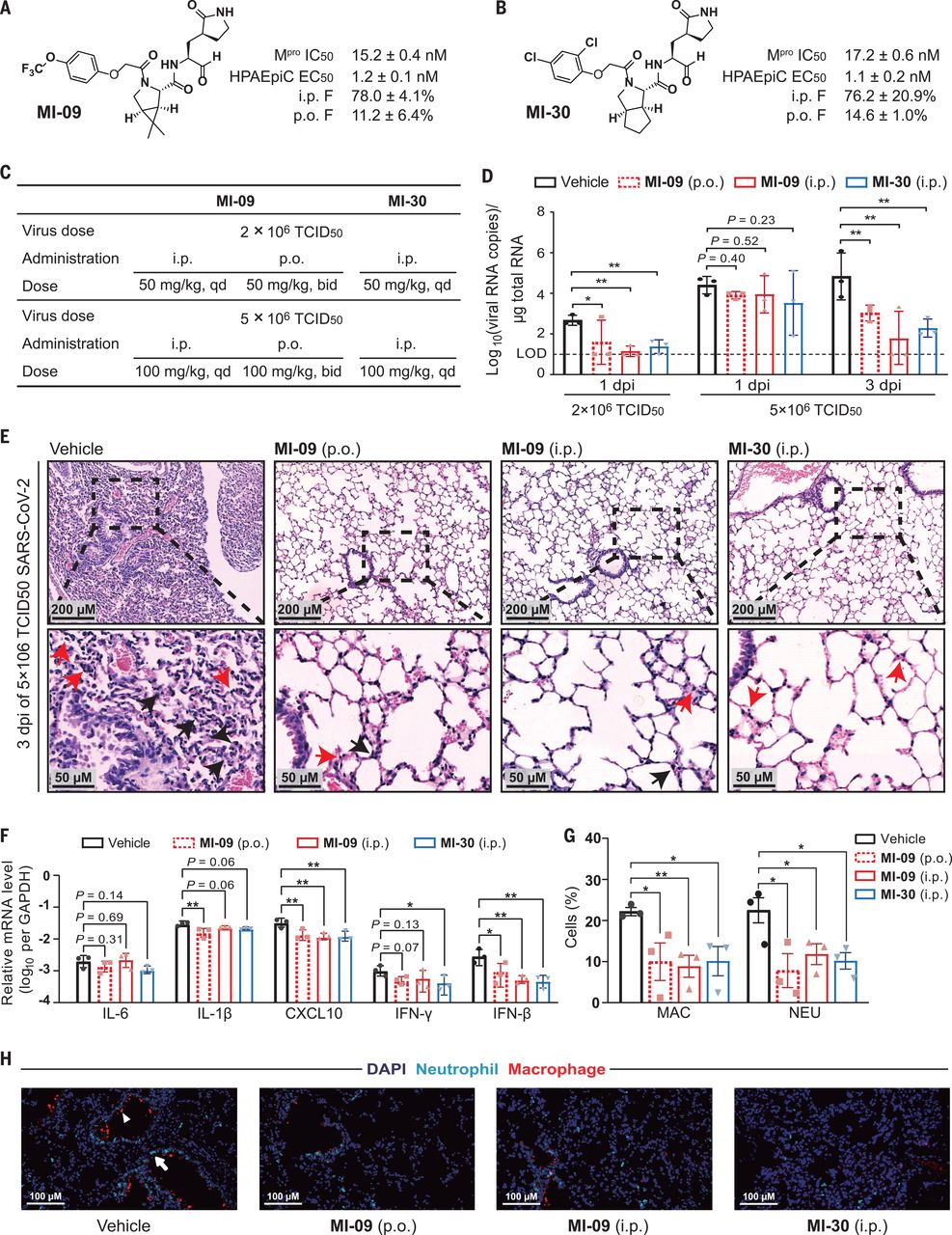On February 19, State Key Laboratory of Biotherapy (SKLB) of West China Hospital and Kunming Institute of Zoology, Chinese Academy of Sciences, jointly published a research paper online in Science (IF: 41.845) about small-molecule anti-viral drugs against COVID-19 titled “SARS-CoV-2 Mpro Inhibitors with Antiviral Activity in a Transgenic Mouse Model”.
The COVID-19 pandemic caused by SARS-CoV-2 continues to pose serious threats to global public health. By the end of January 2021, the virus had infected more than 100 million people and caused a death toll of more than 2.4 million. However, there is still a lack of specific drugs against SARS-CoV-2. Therefore, the development of innovative drugs against SARS-CoV-2 is urgently required.
The main protease (Mpro) of SARS-CoV-2 plays a key role in the process of virus replication. At the same time, Mpro is conservative in CoVs, and no human homologous proteins of Mpro have been found, making it an ideal target for anti-SARS-CoV-2 virus. Now, many studies on SARS-CoV-2 Mpro inhibitors have been reported, but they were limited to in vitro studies.
Firstly, through rational drug design, the research team has designed and synthesized 32 new compounds containing bicyclic proline fragments based on telaprevir and boceprevir, both are marketed anti-HCV drugs (Figure 1). These compounds can effectively inhibit the activity of SARS-CoV-2 Mpro in vitro, with the highest IC50 value reaching 7.6 nM.

Fig. 1 Schematic diagram of the design of novel SARS-CoV-2 Mpro inhibitors.
Then, the team solved the co-crystal structure of Mpro in complex with MI-23, one of the most active compounds in the enzymatic assay. It was found that MI-23 suitably resides in the active pocket of Mpro in the form of covalent binding, occupying the P1, P2 and P3 sites, and forming hydrogen bonding interactions with several key amino acids. The binding pattern of the representative compound MI-23 with Mpro is consistent with the team’s design concept.

Fig. 2 Overall structure of SARS-CoV-2 Mpro–MI-23 complex.
Next, the team conducted assessments on the anti-SARS-CoV-2 virus activity, the pharmacokinetic properties of rats and the safety. The cellular level anti-SARS-CoV-2 virus experiments on 20 selected compounds revealed good anti-virus effects in different cell lines (Figure 3). Six compounds with good cellular antiviral activity were then selected to assess their pharmacokinetic properties and in vivo safety evaluation. Among them, compounds MI-09 and MI-30 showed the best pharmacokinetic properties and safety.

Fig. 3 Antiviral activity of six compounds against SARS-CoV-2 in cell-based assays.
Finally, the authors commented the anti-SARS-CoV-2 effects of MI-09 and MI-30 on transgenic (hACE2) mouse models (Figure 4). The results showed that mice treated with these compounds (orally or intraperitoneally) displayed mild alveolar septal thickening and inflammatory cell infiltration, while the control group exhibited moderate symptoms. Compared with the control group, there were fewer neutrophils and macrophages in the lungs of mice treated with compounds, indicating that immune cell infiltration was inhibited. Collectively, oral or intraperitoneal injection of MI-09 or MI-30 can significantly reduce pulmonary viral load and pulmonary pathological damage.

Fig. 4 MI-09 and MI-30 reduce lung viral loads and lung lesions in a SARS-CoV-2 infection transgenic mouse model.
To sum up, the research work reported a series of new Mpro inhibitors with high potency. Anti-viral effects and mechanisms of action of these compounds were investigated from levels of molecules, cells and animals. From the aspects of pharmacokinetic properties and safety, the series of compounds have the potential to be developed as anti-SARS-CoV-2 virus drugs. This is also the first report of in vivo anti-SARS-CoV-2 activity of Mpro inhibitors in a mouse model. This research work represents a key progress in the development of oral SARS-CoV-2 drugs, and indicates that the State Key Laboratory of Biotherapy in West China Hospital, Sichuan University has taken an important step in the research and development of innovative drugs against SARS-CoV-2.
SKLB is the first author affiliation and the first corresponding author affiliation of the paper. The corresponding authors of the paper are Professor Yang Shengyong, Professor Lei Jian from West China Hospital of Sichuan University, and Professor Zheng Yongtang from Kunming Institute of Zoology.